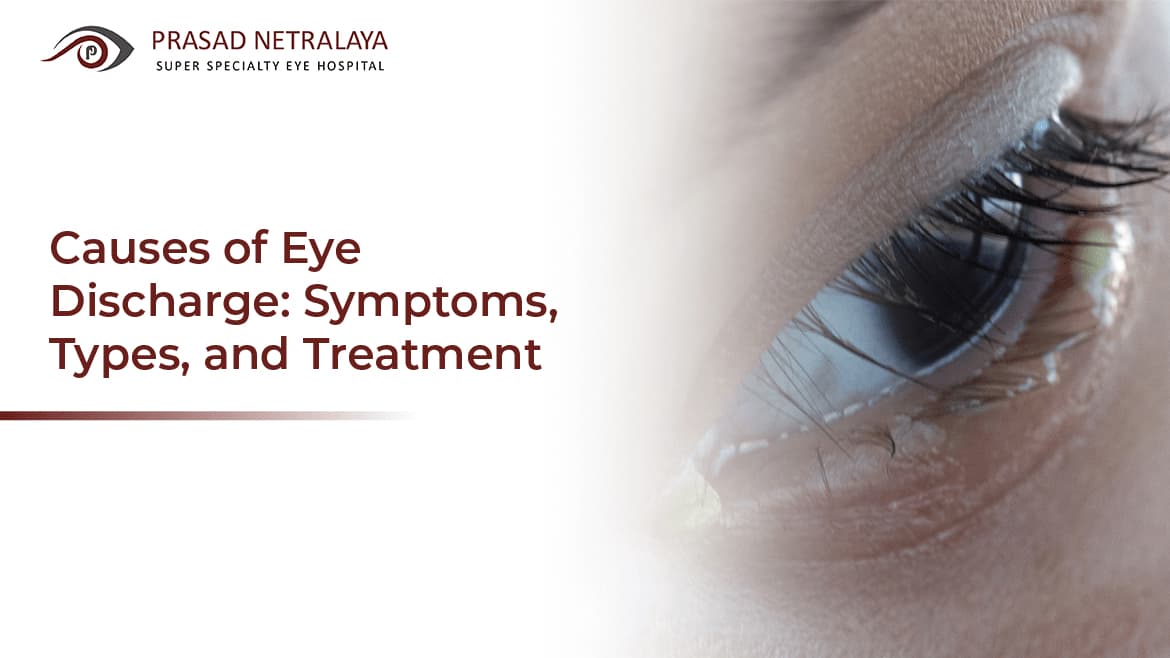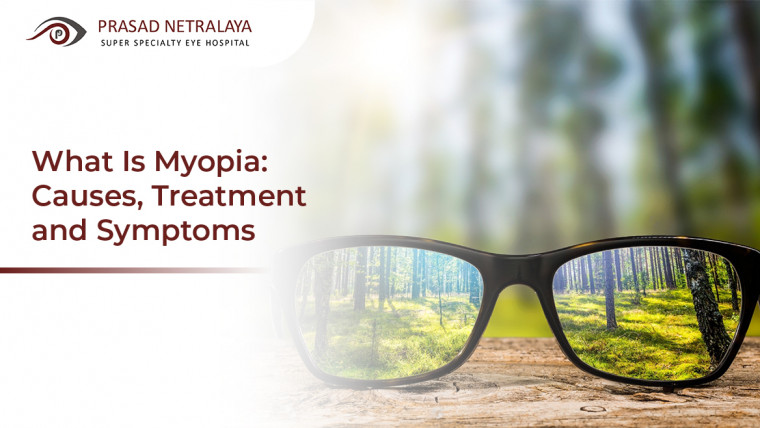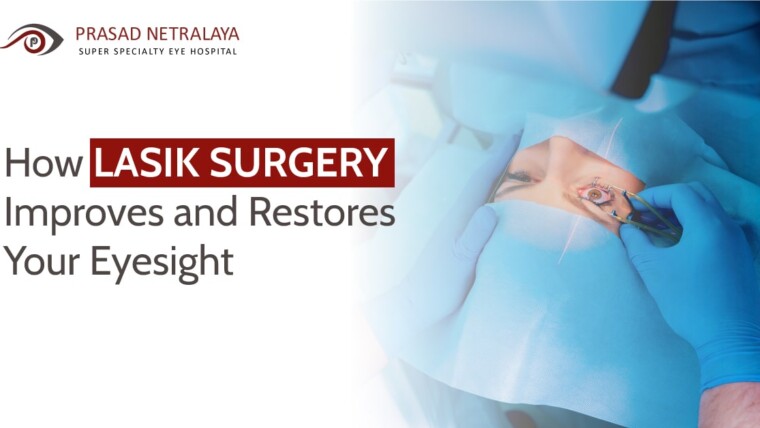One of the many things that can really irritate your eye is eye discharge. It comes in many forms, and not all of them are the same. There are many causes of eye discharge, some of which are quite serious.
To get you up to speed, this article will go over what eye discharge exactly is, the causes of eye discharge, its symptoms, and its many types.
Let’s begin.
Table of Contents
What is Eye Discharge?
Eye discharge, also referred to as “sleep” in the eyes, is a collection of mucus, oil, skin cells, and other debris in the corner of your eye. It usually collects when you sleep. Depending on the amount of moisture it’s evaporated, eye discharge can be oily and moist or dry and crunchy.
While in most cases, the condition is not serious, a chronic or extreme discharge requires immediate attention.
Let’s look at the symptoms of eye discharge so that you can take medication or treatment at an early stage.
Symptoms of Eye Discharge
A small amount of eye discharge in the morning is normal. Yet, abnormally high eye discharge, whether yellow or green, photosensitivity, or eye pain, can be a sign of a major eye problem or infection. Please make sure you see a doctor immediately in such cases.
We will take a look at the different causes of eye discharge to be aware of the condition.
Causes of Eye Discharge
Allergies or infections could sometimes be likely causes of eye discharge. Even while a majority of the causes of eye discharge aren’t serious, you should seek treatment if you experience persistent or excessive discharge that makes it challenging to open your eyes.
The major causes of eye discharge are mentioned below.
1. Bacterial Conjunctivitis
Bacterial conjunctivitis is an eye ailment caused by pathogens. The primary symptom is pus-filled eyelids after sleeping. It may affect one or both eyes. The bacteria cause the formation of pus in the eyes. The patient experiences mild pain in the affected eye, and the condition usually takes a week to recover.
2. Viral Conjunctivitis
This happens when the transparent membrane that lines our eyelids catches an infection. It makes the blood vessels in our conjunctiva swollen or inflamed, which makes the white part of our eyes appear pink.
3. Allergic Conjunctivitis
Allergens, such as pollen, dander, dust, and other prevalent allergens that cause eye allergies, lead to allergic conjunctivitis. Watery eye discharge is a common symptom. Allergic conjunctivitis always impacts both eyes, but it’s not contagious.
4. Blepharitis
Blepharitis is an eye infection where there is abnormal oil generation through the meibomian glands on the internal side of the eyelids. It can also lead to inflammation of your eyelash follicles.
5. Stye
Styes are blocked meibomian glands often brought on by diseased eyelash follicles at the bottom of the eyelid. The ailment, also termed a hordeolum, resembles a blister on the margin of the eyelid and is generally accompanied by swelling, redness, and discomfort in the affected region.
6. Dry Eyes
Dry eye syndrome, a generally chronic ailment wherein the area of the eyes is poorly moistened and becomes uncomfortable and inflamed, can be caused by minimal tear generation or malfunctioning of the meibomian glands.
7. Other Eye Infections
Various eye infections, other than conjunctivitis, also result in unusual eye discharge. These consist of eye herpes, fungal keratitis, and Acanthamoeba keratitis.
8. Improper Use of Contact Lenses
You can observe that your eyes feel weak if you use contacts. This might be due to various factors, such as an eye infection carried on by contact lenses, irritation from wearing contacts that may cause dry, irritable eyes, or just rubbing or poking your eyes too much when wearing contacts.
Now that we have gathered an understanding of the causes, let’s look at the most common types of eye discharge.
Types of Eye Discharge
Various types of eye discharge result from different conditions. Some point to more serious issues that need to be addressed and treated immediately. Others are harmless and don’t need medical care.
While certain types of eye discharge are moderate and don’t seriously endanger eyesight, it’s still important to consult a doctor to avoid any dire consequences. Let’s take a look at the different types of eye discharge:
- Watery eye discharge: This eye discharge occurs when mucus forms on watery tears.
- Viscous eye mucus: Sticky or viscous eye mucus may signify a bacterial infection. This could also lead to greyish, greenish, or yellowish eye discharge.
- Yellow mucus: A stye might be the reason for the yellow eye discharge, along with a little bump or lump over your eyelids.
- Stringy mucus: Dry eye is generally characterized by stringy eye discharge.
- Crusty eyelash: Crust may occur on the eyelashes as a reaction to eye mucus moving over the eyelids. In some cases, the crust can also be so dense that it keeps the eyes shut.
Treatment for Eye Discharge
If you detect any abnormal eye discharge, consult an eye specialist immediately. A warm cloth over the eyes may assist in removing eye discharge and lessen eye itching and overall pain.
Doctors may employ treatments like antibiotics, eye drops, and ointments to help you recover faster.
Also Read: All you need to know about the causes and effects of smog!
How to Prevent Eye Discharge
While some causes of eye discharge are unavoidable, many can be prevented through simple hygiene and lifestyle adjustments.
Follow Proper Eye Hygiene
- Avoid touching or rubbing your eyes with unclean hands.
- Clean your eyelids gently with a warm compress if crust or discharge builds up.
- Remove makeup completely before sleeping.
Disinfect Contact Lenses
- Always wash your hands before handling contact lenses.
- Follow the recommended contact lens cleaning routine.
- Avoid using expired solutions and never sleep in lenses unless prescribed.
Limit Exposure to Allergens
- Keep your surroundings clean and dust-free.
- Use an air purifier to minimize allergens indoors.
- Take antihistamines as prescribed during allergy seasons.
When to See a Doctor
In most cases, eye discharge goes away with basic care. However, you should seek immediate medical attention if you notice:
- Eye pain or blurry vision
- Sensitivity to light (photophobia)
- Swelling or redness that worsens over time
- Discharge that keeps coming back or worsens
- Crusting that prevents your eyes from opening in the morning
Don’t wait for symptoms to worsen — early treatment can protect your vision and prevent complications.
Know the Causes of Eye Discharge and Get Treatment Today!
Eye discharge seems to be a harmless and mild condition at times, but it has the potential to worsen. Eye discharge could become a big problem if not taken care of. While everyone should consider a regular eye checkup once or twice a year, if you experience abnormal eye discharge, it is imperative you seek an ophthalmologist.
Visit Prasad Netralaya, the best eye hospital in Karnataka, to receive treatment for eye discharge and protect your vision to be able to experience the beautiful world around us!
Frequently Asked Questions (FAQs)
1. Is it normal to have eye discharge every morning?
Yes, a small amount of discharge in the morning is normal. It’s your eye’s way of clearing out debris that has built up overnight.
2. Can eye discharge be contagious?
Yes, if caused by viral or bacterial conjunctivitis, eye discharge can be contagious. Avoid sharing towels or personal items and practice good hygiene.
3. What home remedies can help reduce eye discharge?
Warm compresses, lubricating eye drops (artificial tears), and proper eyelid cleaning can provide relief. However, consult a doctor if symptoms persist.
4. Is yellow or green eye discharge serious?
Yes, yellow or green discharge usually indicates a bacterial infection and should be evaluated by an eye doctor for proper treatment.
5. Can allergies cause eye discharge?
Absolutely. Allergic conjunctivitis is a common cause of watery discharge accompanied by itching and redness.



